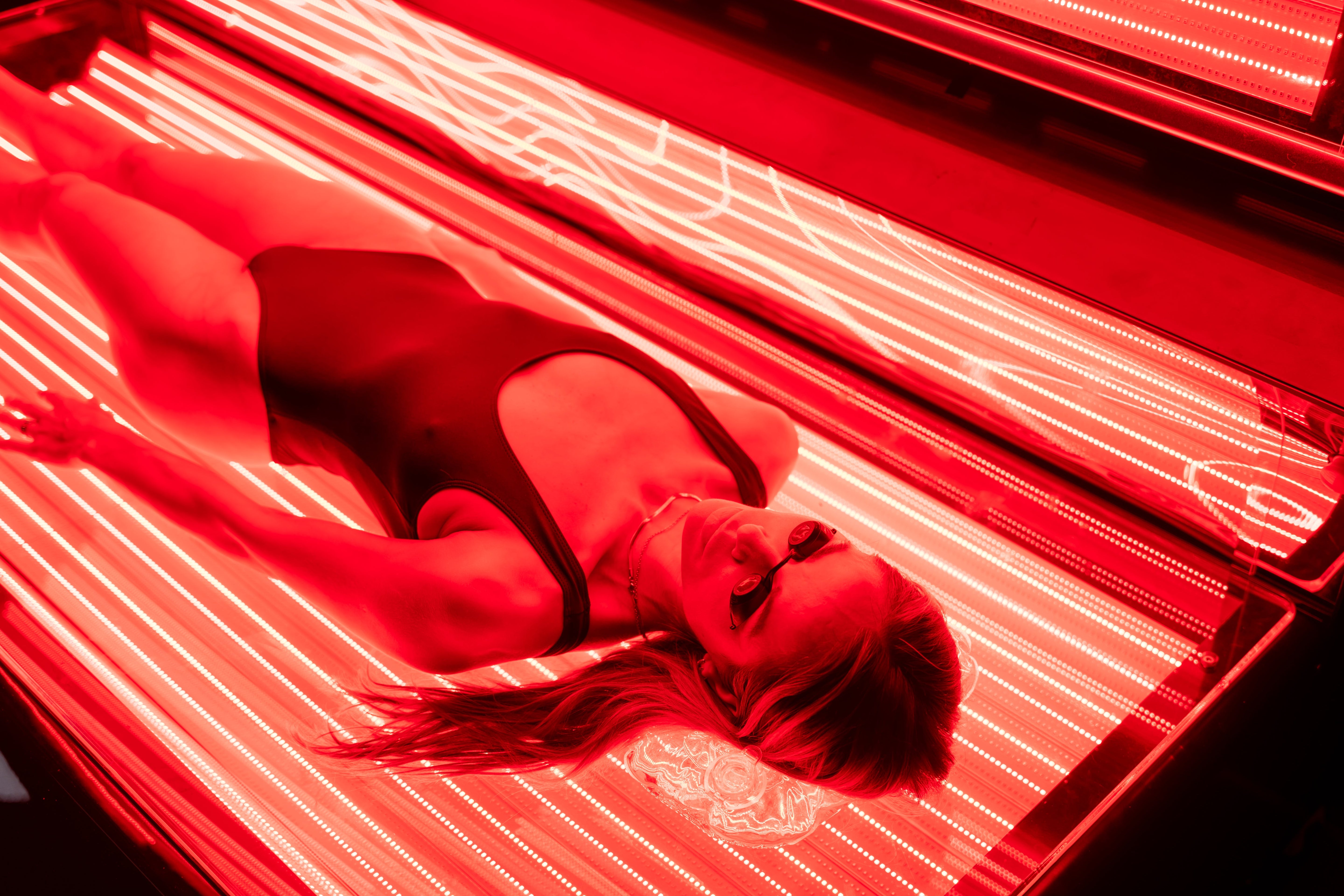Sick of shedding more hair than your pet? Red Light Therapy at Home might just be your scalp’s new best friend. Short answer: LED helmets and laser caps work best. Want to know how Red Light Therapy Panels and Red Light Therapy Beds compare? Stick around—we’ve got your follicles covered.

What is Red Light Therapy for Hair Growth and How Does it Work?
The Science of Photobiomodulation: How RLT Stimulates Hair Follicles
Red light therapy, or photobiomodulation, involves using low-level light to stimulate hair follicles.
The red or near-infrared wavelengths penetrate the scalp and energise cells at the follicular level.
This process increases blood circulation and oxygen, promoting a healthier scalp environment.
As a result, hair follicles can stay in the active (anagen) growth phase for longer.
This means your strands grow thicker, stronger, and more resilient over time.
The Difference Between Red Light Therapy (RLT) and Low-Level Laser Therapy (LLLT)
Though they share a goal, RLT and LLLT use different types of light.
LLLT employs coherent laser light, while RLT generally uses LEDs.
Laser devices offer more precision, but LED-based therapy provides broader coverage.
Both technologies can benefit hair growth and are often blended in consumer products.
What matters most is the device's quality, wavelength, and consistency of use.
How to Choose the Best Red Light Therapy Device for You
Crucial Factors: Wavelength, Power, and FDA Clearance
Wavelength (nm): Why the 600–700nm Range is Key
Devices in the 630–670 nanometre range offer the best results for hair regrowth.
These wavelengths reach the hair follicles effectively without harming surrounding tissue.
It’s crucial to avoid devices that fall outside this range.
Otherwise, the therapy may not reach the intended depth in the scalp.
Always check the product specifications before buying.
Energy Output and Power: Understanding Dosage
The strength of the device matters too.
Power is measured in milliwatts per square centimetre (mW/cm²).
Look for a device offering at least 5 mW/cm² for proper stimulation.
Stronger power means shorter sessions and better coverage.
It also improves overall efficiency of the treatment.
FDA Clearance vs. Unapproved Devices
In the UK, products may carry FDA clearance from the United States.
While not a legal requirement locally, it offers peace of mind.
It ensures the device meets safety and efficacy standards.
Avoid untested or unapproved gadgets that promise miracle results.
Stick with well-reviewed, science-backed options.
Device Types: Helmets, Caps, Handhelds, and Combs
Red Light Therapy Helmets & Caps (Hands-Free Convenience)
Helmets and caps are ideal for those wanting a fuss-free solution.
You simply place the device on your head and relax.
These devices typically cover the entire scalp and offer automated sessions.
They’re especially useful for widespread hair thinning or prevention.
Many come with timers and built-in safety shut-offs.
Handheld Brushes and Combs (Targeted Application)
Handheld tools allow for more precise application.
They’re often used on problem areas like receding hairlines or bald spots.
These are more affordable and portable than helmets.
However, they require manual effort and consistency.
Perfect for those on a tighter budget or just starting out.
The Best Red Light Therapy Devices for Hair Growth
What to Expect: Timeline, Consistency, and Side Effects
You won’t see overnight results—patience is key.
Visible improvements often begin after 8 to 16 weeks of regular use.
Many users report less shedding in the first month.
Side effects are minimal, often limited to mild warmth or tingling.
Stick with the schedule for best results.
Combining RLT with Other Treatments for Optimal Results
Red light therapy isn’t a miracle on its own.
Pairing it with proven treatments like minoxidil can enhance outcomes.
A healthy diet and proper scalp care also play a big role.
Consistency across treatments makes all the difference.
Think of RLT as a supportive partner, not a solo act.
Takeaways
-
Best overall option? LED helmets and laser caps
-
Top wavelength: Stick to devices in the 630–670nm range
-
Power matters: Look for at least 5 mW/cm² output
-
Stay consistent: 3–5 sessions per week, minimum 8 weeks
-
Boost results: Combine with topical treatments and nutrition
Conclusion

Red Light Therapy at Home offers an effective, non-invasive route to support hair growth.
Whether you go for a Red Light Therapy Helmet, Panel, or even a Red Light Therapy Bed, the key is choosing wisely and staying consistent.
Your follicles may be tired, but with the right light—they’re not finished yet.






